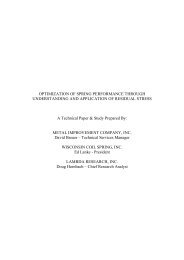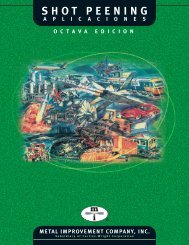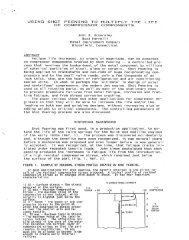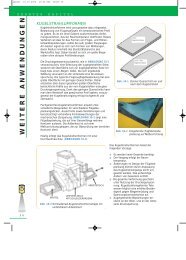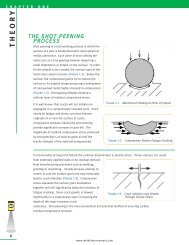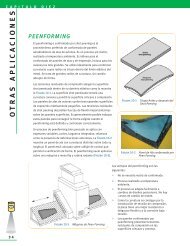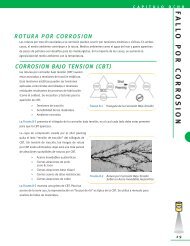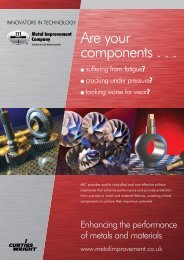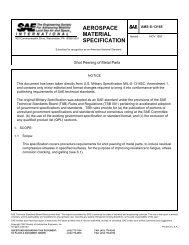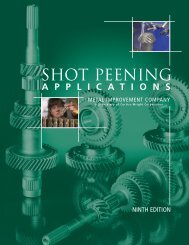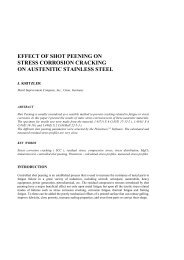peen forming - Metal Improvement Company
peen forming - Metal Improvement Company
peen forming - Metal Improvement Company
Create successful ePaper yourself
Turn your PDF publications into a flip-book with our unique Google optimized e-Paper software.
The majority of aircraft in production with aerodynamically<br />
formed aluminum alloy wingskins employ the <strong>peen</strong> <strong>forming</strong><br />
process.<br />
<strong>Metal</strong> <strong>Improvement</strong> <strong>Company</strong> has developed computer<br />
modeling techniques that allow feasibility studies of<br />
particular designs. The program takes three-dimensional<br />
engineering data and, based on the degree of compound<br />
curvature, calculates and illustrates the degree of <strong>peen</strong><br />
<strong>forming</strong> required. It also exports numerical data to define the<br />
Figure 10-4 Computer Modeling of<br />
<strong>peen</strong>ing that is required to obtain the curvatures. A<br />
significant advantage of these techniques is that MIC can<br />
Peen Forming Operation<br />
assist aircraft wing designers in the early stages of design. These techniques insure that the desired<br />
aerodynamic curvatures are met with economically beneficial manufacturing processes (Figure 10-4).<br />
C O N T O UR C O R R E C TION<br />
Shot <strong>peen</strong>ing utilizing <strong>peen</strong> <strong>forming</strong> techniques can be used to correct unfavorable geometry conditions.<br />
This is accomplished by shot <strong>peen</strong>ing selective locations of parts to utilize the surface loading from the<br />
induced compressive stress to restore the components to drawing requirements. Some examples are:<br />
• Driveshaft/crankshaft straightening<br />
• Roundness correction of ring shaped geometry<br />
• Aircraft wing stiffner adjustment<br />
• Welding distortion correction<br />
The <strong>peen</strong> <strong>forming</strong> process avoids the unfavorable tensile residual stresses produced by other straightening<br />
methods by inducing beneficial compressive residual stresses.<br />
W ORK H A R D E N I N G<br />
A number of materials and alloys have the potential to work harden through cold working. Shot <strong>peen</strong>ing<br />
can produce substantial increases in surface hardness for certain alloys of the following types of materials.<br />
• Stainless steel<br />
• Aluminum<br />
• Manganese stainless<br />
steels<br />
• Inconel<br />
• Stellite<br />
• Hastelloy<br />
This can be of particular value to<br />
parts that cannot be heat treated but<br />
require wear resistance on the<br />
surface. The following table<br />
illustrates examples of increases in<br />
surface hardness with shot <strong>peen</strong>ing.<br />
Material Before After Percent<br />
Shot Peen Shot Peen Increase<br />
Cartridge Brass 50 HRB 175 HRB 250<br />
304 Stainless 243 HV 423 HV 74<br />
316L Stainless 283 HV 398 HV 41<br />
Mn Stainless 23 HRC 55 HRC 139<br />
Inconel 625 300 HV 500 HV 67<br />
Stellite 42 HRC 54 HRC 29<br />
Hastalloy C 18 HRC 40 HRC 122 *<br />
Hastalloy C 25 HRC 45 HRC 80 **<br />
* Wrought condition ** Cast condition<br />
www.metalimprovement.com<br />
C H A P T E R T E N<br />
O THER APPL ICA T IONS<br />
35



